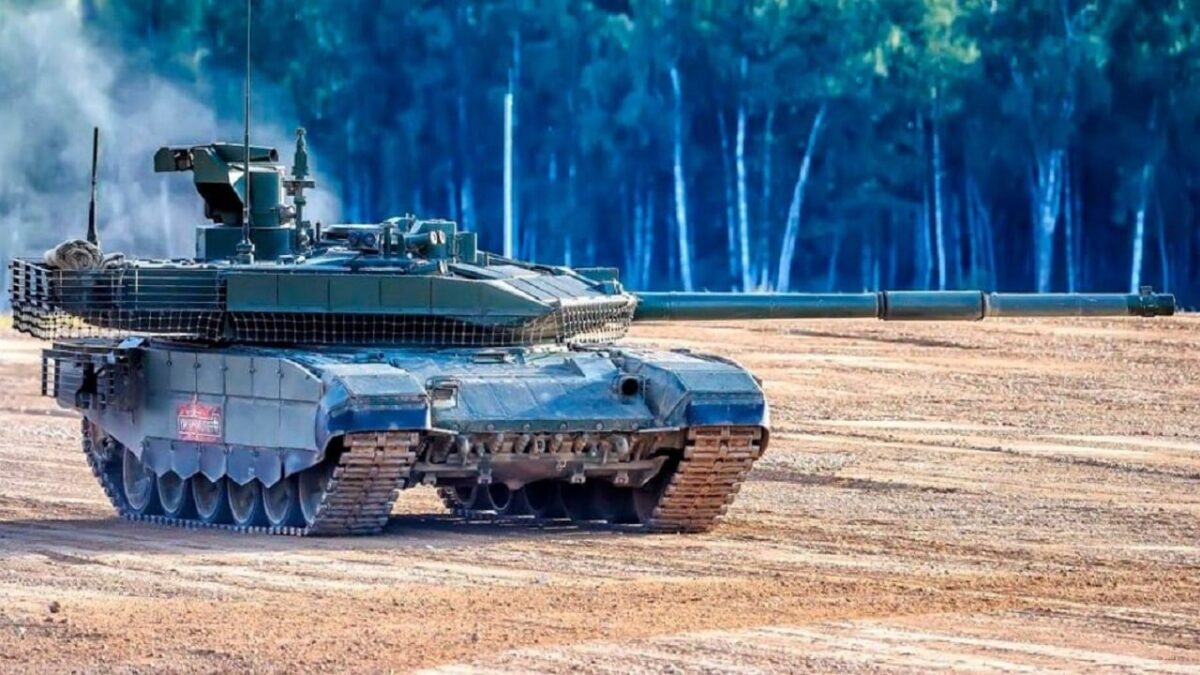Ukraine War Update: On day 118 of the Russian invasion of Ukraine, the Russian military is still going after the breakthrough that it has been trying to achieve in the Donbas since it launched a renewed offensive in eastern Ukraine more than a month ago.
The situation in the Donbas
Most of Severodonetsk is in Russian hands, but a strong pocket of Ukrainian resistance is still located in the industrial part of the key city.
The Russian forces have failed to encircle the city, largely because they have failed to cross the Siverskyy Donets River that runs through the west of Severodonetsk. Should the Russian military manages to ford the river in force, then it has good chances of fully surrounding the Ukrainian forces inside the city.
But Russian river crossing capabilities are subpar. Indeed, a few weeks ago, an attempt to ford the same river at a different location resulted in the loss of 80 Russian tanks, armored personnel carriers, and infantry fighting vehicles.
The Ukrainian Ministry of Defense claimed that as of Tuesday, Ukrainian forces have killed approximately 34,100 Russian troops (and wounded approximately thrice that number), destroyed 216 fighter, attack, and transport jets, 181 attack and transport helicopters, 1,496 tanks, 752 artillery pieces, 3,606 armored personnel carriers, 239 Multiple Launch Rocket Systems (MLRS), 14 boats and cutters, 2,537 vehicles and fuel tanks, 98 anti-aircraft batteries, 611 tactical unmanned aerial systems, 59 special equipment platforms, such as bridging vehicles, and four mobile Iskander ballistic missile systems, and 137 cruise missiles shot down by the Ukrainian air defenses.
The Naval Aspect of the Ukraine Conflict
In its daily estimate of the war, the British Ministry of Defense focused on the naval aspect of the conflict. The absence of a strong Ukrainian naval force largely allowed Russia to control the seas at the start of the war. But subsequent Western security aid to Ukraine has allowed the Ukrainian military to create a potent long-range anti-ship capability that is largely negating any numerical or technological advantages that the Russian Navy has.
There is no better example to show this than what is going on on the famous Snake Island. The Russian forces captured the small island in the first weeks of the war after a defiant Ukrainian defense. Moscow then proceeded with fortifying Snake Island with anti-aircraft and ground-to-ground weaponry and radars in order to deny the airspace to the Ukrainians and also create a base from where it could strike the Ukrainian mainland.
But these efforts have been frustrated by repeated Ukrainian attacks on Snake Island that have included airstrikes and Bayraktar TB2 unmanned aerial strikes against the Russian hardware and command and control facilities on the island. And the Ukrainians are also targeting any Russian vessels that are attempting to resupply the Russian garrison.
“On 17 June 2022, Ukrainian forces claimed their first successful use of Western-donated Harpoon anti-ship missiles to engage Russian maritime forces. The target of the attack was almost certainly the Russian naval tug Spasatel Vasily Bekh, which was delivering weapons and personnel to Snake Island in the north-western Black Sea,” the British Military Intelligence assessed.
The U.S., Denmark, and the United Kingdom have all sent or committed to sending Ukraine the Harpoon anti-ship missile. Only recently, the Pentagon greenlighted another security aid package worth $1 billion to Ukraine that included Harpoon anti-ship missiles.
“The destruction of the Russian vessel on a resupply mission demonstrates the difficulty Russia faces when attempting to support their forces occupying Snake Island. This is the latest in a series of Russian vessels, including the cruiser Moskva, to be damaged or destroyed by Ukraine during the conflict,” the British Ministry of Defense stated.
With the addition of the Harpoons, the Ukrainian coastal defenses now have a potent long-range strike capability, making it hard if not impossible for the Russian naval forces to operate undisturbed in the waters of the Black Sea.
“Ukrainian coastal defence capability has largely neutralised Russia’s ability to establish sea control and project maritime force in the north-western Black Sea. This has undermined the viability of Russia’s original operational design for the invasion, which involved holding the Odesa region at risk from the sea,” the British Military Intelligence stated.

Russian T-90M tank. Image Credit: Twitter.
Earlier in the war, the Ukrainians expertly combined unmanned aerial vehicles with the Neptune anti-ship missile to strike and sink the guided-missile cruiser Moskva, the flagship of the Russian Black Sea fleet.
1945’s New Defense and National Security Columnist, Stavros Atlamazoglou is a seasoned defense journalist specializing in special operations, a Hellenic Army veteran (national service with the 575th Marine Battalion and Army HQ), and a Johns Hopkins University graduate. His work has been featured in Business Insider, Sandboxx, and SOFREP.

